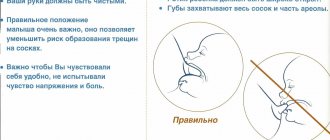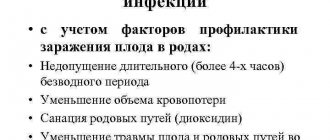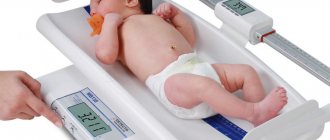Sometimes it happens that a mother cannot breastfeed her baby. Of course, there is nothing better than the situation when children “extract” milk from the breast. But what to do if, for a number of reasons, a woman cannot afford him such luxury. You can feed your baby a natural product, or an adapted formula, which can cause allergies.
Of course, every caring mother will choose the best option for her baby, namely feeding expressed milk from a bottle. This material will tell you how to properly organize the feeding process in order to nourish your baby with a healthy and tasty treat for as long as possible.
Feeding a baby with expressed milk from a bottle is quite common among modern women. Some of them consciously choose this option, while others are forced to do so due to certain reasons. In the article we will talk about the cases in which this measure is justified, as well as how to properly express your breasts and prepare milk for feeding. What needs to be done to prevent a child from being tormented by gas?
Before telling you how to establish feeding with expressed milk, it is necessary to determine the main situations in which such liberties are allowed.
When can you feed
You can feed your baby with expressed milk in the following cases:
- The newborn was born premature and therefore cannot breastfeed.
- A nursing woman returns from maternity leave to work until the child is six to nine months old. In this case, you can not switch the baby to formula, but introduce adult food into his diet in the form of the first baby food and continue to feed the baby with expressed breast milk. Both grandma and dad can do this.
- Feeding with expressed milk can also be practiced in the event of separation of the child from the mother. For example, if a newborn has serious health problems and is in intensive care. Most maternity hospitals allow you to express milk, which will be bottle-fed to your baby by health workers.
- The problem of inverted nipples, which significantly complicates the process of breastfeeding. Another common reason for switching to expressed milk is cracked and bleeding nipples. In this case, it is important to remember that you can only use hand expression or the “warm bottle method”, popular in Europe. Don't forget to lubricate your nipples with a special cream. After they heal, and you study the question of how to properly attach your firstborn to the breast, we recommend returning to the traditional option of breastfeeding.
- Also, the baby can independently refuse the breast. This is usually preceded by one of the family members giving him some water or a healthy fruit drink from a bottle. After this, the baby understands that it is much easier to eat milk from the nipple. If this is your situation, there is no need to panic. At first, try to specifically put your baby to your breast as often as possible. But be prepared for the fact that he may bite your chest. This is especially acute when the baby has already cut his teeth.
How can you feed your baby without using a bottle with a nipple?
Being pregnant for the second time, I decided to purchase a Chicco bottle warmer. And it’s right that I bought this heater. When my daughter was born, I was away on business and had to pump. I want to say that frozen breast milk cannot be defrosted in a microwave oven, but only in a steam bath, or wait until it melts on its own.
Some diseases caused by bacterial flora require treatment with antibiotics. In such cases, it is better to wean the child from the breast for 5-7 days, transferring him to artificial feeding. During the course of treatment, it is necessary to express 6-7 times a day to maintain lactation, then after completing the course of antibiotic therapy you can return to breastfeeding.
The composition of breast milk changes as the baby grows, in accordance with the changes in the set of nutrients it needs. Therefore, reserves of expressed milk should be used as quickly as possible, regardless of potential shelf life. The instructions printed on the packaging, which must be followed strictly, will help you prepare the formula for feeding your baby correctly.
This is a great chance for dad! Feeding your baby pumped milk will allow him to form a strong bond with his baby.
Of course, breastfeeding for newborns is a priority, since only in this way can a baby receive absolutely complete nutrition, rich in all the necessary vitamins and minerals, as well as other substances that are needed for proper development and growth.
If feeding with expressed product is due to the problem of inverted nipples or their bleeding, itching, cracking, collecting nutrition from the breast can only be done manually using the “warm bottle” method.
Breast milk is the main nutrition of a child in the first months of life. Ideally, the mother should be with the baby all the time to prevent the feeling of hunger. Despite every desire, it is quite difficult to ensure that the mother stays with the child permanently. In this situation, pre-expressed breast milk will help out. How to properly prepare milk for a baby?
Recommendations from experts
How to properly feed expressed milk? Many mothers who bottle-feed rather than breastfeed believe that they need to adhere to the principles that work when bottle-feeding. In this regard, there are several factors that can harm your newborn or infant and your emotional peace. We will talk about them now, answering the most common questions of young mothers.
- How often should you bottle feed your baby? If pediatricians recommend adhering to a three-hour interval when feeding artificial babies, then this does not work in your case, because a natural product from the mother’s breast is absorbed much faster by the baby’s delicate stomach than an adapted milk formula. Therefore, it is worth sticking to feeding expressed milk on demand. It is much more convenient for both mother and baby to eat in small portions with an interval of 1-2 hours.
- How to determine how much milk needs to be expressed so that your baby gets enough to eat? It is very difficult to answer this question, because when the baby suckles, the mother does not know how much he has sucked. But you can roughly follow the norms for artificial feeding. However, do not forget that breast milk is more nutritious and is easier for the newborn to digest. Therefore, if you need 100 ml to fully feed an artificial baby. adapted mixture, then in the case of expressed product, 70-80 ml is sufficient. Giving more milk is not recommended because the baby may overeat, which will worsen the problem of intestinal colic. Start with 70 ml. If you feel like your baby isn't eating enough, do a wet diaper test the next day (to determine the number of urinations per day). If their number is less than 12, increase the serving size by 10 ml. or simply add 1-2 bottle feedings per day.
- Should I feed at night? If you are breastfeeding, don't underestimate night feedings. Of course, they are not as convenient as simply giving the baby a breast, but still you cannot do without them. Women who do not directly breastfeed must stimulate the production of the hormone prolactin by any means, so pumping and feeding the baby is necessary. And best of all, at least twice a night. At the same time, we recommend not to be lazy and express each portion of milk separately. This will increase the production of necessary hormones, which will allow you to maintain lactation for a long time.
- When should you not feed your newborn? We also do not recommend feeding your baby expressed milk when you are in an irritated state. The same applies to the baby himself. Make sure he is in a good mood before giving him food. If he sobs or cries, calm him down before you put the bottle to his mouth. Otherwise, the baby will swallow air and his tummy will bother him.
Pay attention to the psychological aspect. Despite the fact that the baby drinks breast milk from a bottle, he may feel a lack of maternal affection. In this case, joint night and daytime sleep is what the doctor prescribed. Close tactile contact with the mother will make the baby calmer and help him develop properly.
How to feed your baby expressed breast milk
When it is not possible to put the baby to the breast, but there is a desire to feed him with your milk, you can use pumping. There are rules and techniques that should be learned. This way, the mother will know how to feed her baby with expressed breast milk and will be able to use the knowledge in practice.
- When is it necessary to feed expressed milk?
- Expression technique
- Rules for feeding expressed milk
- How to store expressed milk
When is it necessary to feed expressed milk?
Unfortunately, circumstances often arise that prevent normal breastfeeding. But don't give up right away.
You have to fight for natural feeding. After all, this is the best food for a baby. Even the most modern and expensive mixtures cannot replace it.
Situations when you have to give breast milk from a bottle:
- difficult birth for the mother;
- trauma in the baby that occurred at the time of birth;
- birth of a premature or low birth weight baby;
- inability to constantly be with the baby and give him breastfeeding on time;
- maternal illness incompatible with feeding.
Finding herself in one of these situations, the mother is forced to constantly express milk. The stock can be stored in the refrigerator and even in the freezer.
The latter is especially true if the mother is about to leave.
Expression technique
You should not start expressing milk without knowing the rules. This can cause you a lot of unpleasant sensations and even injure your mammary glands.
How to express milk into a bottle? In one of two ways:
- hands;
- or a breast pump.
You should choose for yourself. Some women claim that breast pumps make expressing easier and more convenient. Others are supporters of the manual process, without using special instruments.
If the mother decides to use a breast pump, she must strictly follow the instructions.
When manually expressing, you need to master a special technique.
Before starting the process, you should stretch the mammary gland a little. So its ducts will expand. To do this, you need to lightly stroke your chest. The direction of movement is towards the nipple.
To express, the mammary gland is directed downwards, the thumb is above the nipple, and the index finger is under it.
In order for the liquid to begin to release, light pressure must be applied to the areola and nipple. If everything was done correctly, first a few drops and then streams of milk will appear on the nipple.
After completing the process, the breasts must be dried with a towel.
Rules for feeding expressed milk
The inability to put a newborn to the breast complicates the feeding process for the mother. And it’s not just the need to strain regularly.
By feeding from the mother's breast, the baby himself determines how much food he needs at a time. Based on this, a certain amount of milk is produced in the mammary glands.
When pumping, the mother must independently calculate the one-time and daily dosage.
Useful tips for mothers: DIFFICULTIES RELATED TO FEEDING
To maintain milk production at a sufficient level in the first 2-3 weeks, a woman will have to pump every hour. But in small quantities. This applies to daytime hours. At night, it is enough to express milk 1-2 times.
It is important to decide how often a baby should have a bottle of milk. He himself will help the mother decide. After all, a hungry child will not sleep peacefully and just lie there.
On average, a baby needs maternal nutrition once every 3 hours during the day. At night, newborns wake up to feed 1-2 times.
Those who have fed expressed milk indicate several rules that must be followed for successful feeding:
• Mother and baby should be positioned comfortably.
• The pacifier is pressed against the baby's lower lip so that it is easy for him to fully grasp it.
• With proper latching, your baby's lips are at the base of the nipple and his tongue is underneath it.
• The bottle must be tilted at all times.
• The child will eat as much as he needs. It is unacceptable to force someone to consume the entire portion.
Despite the lack of attachment, the mother should have tactile contact with the baby. You can hold his hand or stroke him.
This way the baby will feel calm and happy. The emotional state of the child is very important in the feeding process.
After eating, it is important to hold the baby upright. 5-10 minutes is enough. This is necessary to get rid of excess air that enters the stomach during feeding.
To understand whether your baby has enough nutrition, just watch him carefully. If he is calm, does not act up for no reason, sleeps well and has normal stools, then he is full.
For a child up to one and a half months old, 1/5 of his weight is sufficient. At the age of one and a half to six months - 1/6 of body weight.
How to store expressed milk
Milk remains as beneficial as in the mother’s breast for another 30 minutes after straining. Then it can be stored at room temperature for another 5-6 hours.
It is best to place milk in sterile glass containers. And for storage in the freezer, you can use special sterile bags designed for freezing. They are more practical than glassware.
6 rules for proper storage of breast milk:
• Without freezing at a temperature of +15 - +16 degrees, you can store the product in the refrigerator for no more than a day. At a temperature of +3 - +6 degrees - 5-7 days.
For longer storage periods, be sure to place the containers in the freezer compartment. There is a special freezing technique that should be learned from your pediatrician.
• When freezing milk, it is important to sign the date of expression. It will not deteriorate within 12 months at temperatures from -18 to -24 degrees.
• If the shelf life has passed, the product should not be used for feeding.
• Do not mix milk expressed at different times. A separate container is required for each portion.
• Before feeding the baby, milk should be warmed. A water bath is best for this. The temperature of the fluid should be the same as the mother's body temperature.
To determine the correct temperature, just drop a few drops of milk on the inside of the brush.
Feeding expressed milk is not as easy and pleasant as putting a baby to the breast. However, these are temporary difficulties.
But the mother gives the baby the most healthy nutrition possible, and in the future she will be able to continue feeding the baby without the help of pumping and bottles.
- about the author
- Recent publications
Arina Nagovitsyna
author of the publication (site editor)
JOURNALIST Higher education: Faculty of Journalism and Mass Communications
Arina Nagovitsyna recently published (see all)
- What can a child at 3 months - 09/12/2019
- What a 2 month old baby can do – 09/11/2019
- Which formula to choose when mixed feeding - 09/10/2019
How to give your baby a bottle
Mothers who feed their babies with expressed milk should know how to properly give a bottle to their baby so that he does not feel discomfort.
- To begin, choose a comfortable feeding position, not only for your baby, but also for you. For example, if you prefer a sitting position, you can lean on a pillow so that your back does not ache after 15-20 minutes of being in one position.
- Under no circumstances should a nursing parent give milk to a child while lying down (there is a risk of choking). Please note that the newborn's head should be slightly higher than the body. It is recommended to bend your arm at the elbow and place your head on the bend so that it forms a straight line with the spine.
- The nipple of the bottle must be pressed against the baby's lower lip so that he opens his mouth wide. Please note that during feeding, the baby's tongue should be above the nipple. You can make sure that the child is holding it correctly by observing him. If his lips are closed around the wide part of the nipple, then everything is in order.
- To ensure that the newborn swallows as little air as possible while absorbing milk, hold the bottle at an angle. Try to hold it in such a way that the oblong part of the nipple is always filled with milk. This way, most of the oxygen will end up at the bottom of the bottle.
- When feeding expressed breast milk, as with natural feeding, skin-to-skin contact is very important. Don't forget to constantly stroke your newborn and hold his hand. Such manipulations will calm the baby and promote a good appetite. It is advisable to feed him in such a position that his cheek touches his mother's breast.
- Remember that if a sleeping baby can continue to suckle, then leaving the bottle in the mouth with expressed milk is strictly prohibited!
Never rush your baby or try to force him to eat if he stubbornly refuses a bottle (unless he has filled his tummy with air). Believe me, the baby knows best how much breast milk he needs to drink.
How to bottle feed: video
Is it possible to take breaks during feeding?
This question interests parents quite often. Not only is it possible, but it is also necessary. Remember that in the process of absorbing milk from the breast, the baby has the ability to independently regulate the speed of fluid movement. But when feeding from a bottle, he does not have this opportunity.
During feeding, the toddler swallows air along with the milk, which quite often leads to a false feeling of fullness. It is for this reason that you should take short breaks while bottle feeding with expressed milk. You can hold your baby upright or place him on your lap.
Quite often it helps to lightly pat you on the back. The same manipulations must be carried out immediately after feeding. Usually mothers carry their babies in a column for 5 to 10 minutes, until all the air is released. If the baby has frankly overeaten, it can take up to 15-20 minutes to regurgitate the oxygen accumulated in the ventricle.
If this is not done, the newborn may experience an attack of intestinal colic or be tormented by gas. An even worse situation is that a child may choke while crying. Therefore, use any methods and means to calm him down.
How much formula should a child eat?
For newborn children in the first 10 days of life, the amount of infant formula per day is calculated using the following formula: the number of days lived by the child must be multiplied by 70 or 80 (by 70 if the baby was born weighing up to 3,200 g, and 80 if his weight was greater). For example: the baby is 5 days old, his weight is 3500 g. We get: 5 x 80 = 400 g of ready-made formula per day. Next, we divide this amount by the number of feedings and thus obtain the volume of mixture required for one feeding.
The amount of formula needed per feeding for a baby up to 10 days of life can be calculated in a simpler way: the number of days must be multiplied by 10. For example, if the newborn is 6 days old, the formula looks like this: 6 x 10 = 60 g (the finished formula is needed for one feeding ).
Starting from the 11th day of life and up to one year, the daily amount of the mixture is calculated as follows:
- from 10 days to two months, the baby should eat 1/5 of his body weight per day;
- from two months to 4 months - 1/6 of the weight;
- from 4 to six months - 1/7 of the weight;
- from 6 months to a year - 1/8-1/9 of the weight (that is, approximately 900-1100 ml of the finished mixture per day).
For example: the baby is 5 months old and weighs 6 kg. This means the daily intake of ready-made infant formula for this child is: 6,000 g: 7 = 857 g (approximately).
Then you can independently divide this number by the number of feedings per day and thus get the volume of one feeding. For example: 857 g: 6 (number of feedings per day) = 142 g (this is how much ready-made formula is needed for one feeding).
How to properly store expressed product
Many mothers have concerns about giving expressed breast milk from a bottle. Does it need to be heated? Can it be stored at room temperature, and how long will a natural dairy product last in the freezer? Every mother who expresses milk needs to know these nuances.
- The product given to the child must be at body temperature. If you want to feed him from “reserves”, then a portion of milk needs to be heated, but not in a microwave oven, but in a water bath. The most gentle option is under running hot water. Also, do not forget that you should never boil it, otherwise the delicacy will lose all its beneficial properties.
- If you want to put freshly expressed milk in the refrigerator or freezer, leave it at room temperature for half an hour. Be sure to store milk in individual portions, and try not to freeze leftovers.
- For storage containers, choose special sterilized plastic bags - they are the most convenient. Or glass or plastic jars with airtight lids.
Now you know the basic rules and nuances that relate to the question of how to properly feed your baby expressed milk, how to keep breast milk fresh in the refrigerator, and whether it can be frozen. We wish you to enjoy communicating with your baby and not worry about giving him expressed milk.
What to do in this situation?
If for any reason you need to be away from your baby for a long time, then you are doing the right thing by asking in advance how to store breast milk after pumping. A proper diet is very important for a baby, and more important than ever when feeding a newborn baby.
This is where the question arises: how long can breast milk be stored after pumping?
There are a number of conditions under which milk is stored for different amounts of time. This is storing expressed milk indoors, in the refrigerator or frozen.











